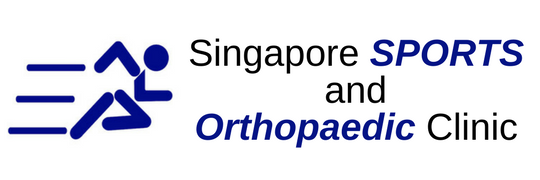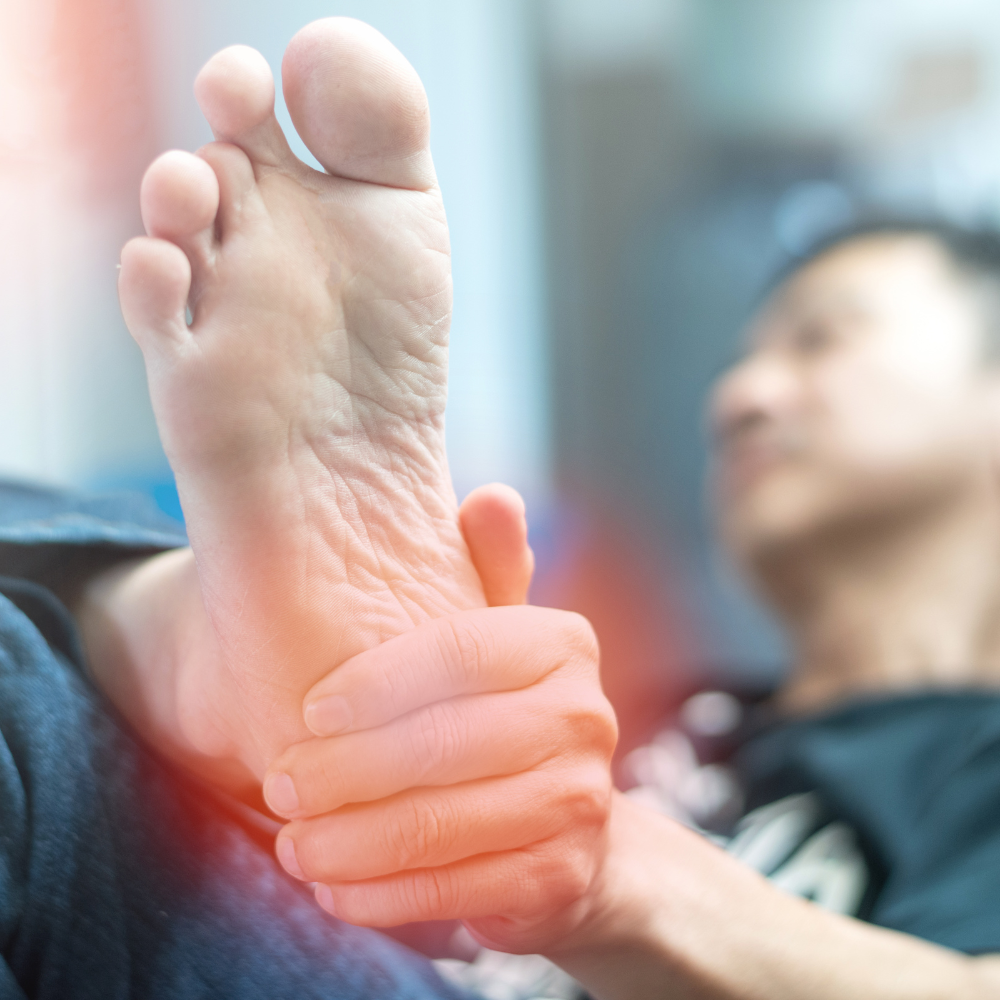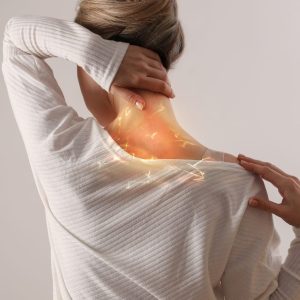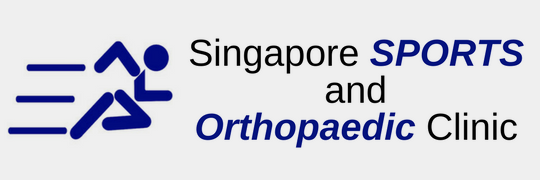Our feet are a marvel of engineering, supporting the weight of our bodies and adapting to various terrains. However, the demands we place on our feet, compounded by fashionable yet often ill-fitting footwear, can lead to chronic foot pain and ankle problems.
Understanding Foot Pain
Foot pain can stem from degenerative issues or previous injuries, affecting joints, tendons, and soft tissues. Some common conditions include plantar fasciitis, hallux valgus, and collapsed arches in adults. Sports-related injuries and daily activities can also cause damage to ligaments, tendons, and fascia. The foot’s complex structure means that an injury in one joint can quickly affect neighbouring joints, emphasizing the urgency for timely diagnosis and appropriate management.
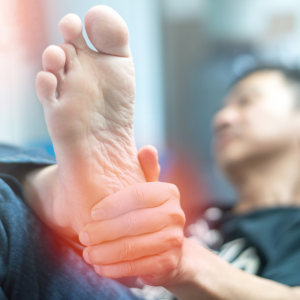
Diagnosing Foot Pain
An orthopaedic consultation with radiological investigations, including X-rays, is typically the first step in diagnosing foot issues. Specialized investigations like CT scans, MRIs, or ultrasound scans may be necessary to assess bones, joints, or soft tissues. Blood tests might also be required to rule out inflammatory arthritis.
Treatment Options
Rest, activity modification, and anti-inflammatory medications can be adequate in the first stages of foot pain. Finding well-fitting shoes can also help alleviate discomfort. Family physicians can manage most conditions conservatively, but a referral to an orthopaedic surgeon may be necessary if symptoms persist. Surgical interventions, such as keyhole or arthroscopic surgery or major deformity corrections, might be required for more severe cases.
What specific examples of footwear choices can lead to foot problems?
When it comes to footwear, searching for the perfect fit is more than a matter of style – it’s a matter of comfort and support for your entire body.
Let’s delve into the key aspects of the right shoe that contribute to your overall well-being.
Cushioning for Comfort: The midsole of your shoe plays a pivotal role in providing cushioning. While shoes may not drastically reduce the force transmitted through your body, they effectively extend the time for that force to take effect. This delay allows your body to adapt gradually, lessening the impact. A well-cushioned shoe can ease the strain on your joints, contributing to a more comfortable experience.
Support for Alignment: An essential criterion for the right shoe is its ability to support your foot’s alignment as it makes contact with the ground. A shoe that promotes proper alignment can maintain the natural curvature of your feet and provide stability as you move. This enhances your comfort, contributes to better posture, and lowers the strain on your muscles and ligaments.
Instant Comfort: The hallmark of an ideal shoe is immediate comfort right from the first wear. Your footwear should embrace your feet with a sense of ease, without any discomfort or painful breaking-in period. This initial comfort is a testament to a shoe’s thoughtful design and potential to accompany you on your daily journeys without causing discomfort.
The Right Fit: A shoe’s fit goes beyond mere measurements; it’s about the harmony between your feet and the footwear. Here are a few guidelines to follow To ensure an optimal fit:
Leave approximately 1‒1.5cm of space at the front of the shoe for natural movement and prevent cramped toes.
Ensure the shoe’s width accommodates your feet comfortably, avoiding pinching or pressure points.
The shoe should envelop your feet snugly, striking a balance between a secure fit and avoiding excessive tightness.
Your footwear is more than an accessory; it’s a supportive companion on your journey. The proper shoe cushions your steps, supports your alignment, offers immediate comfort, and fits seamlessly. By paying attention to these crucial elements, you’re investing in the well-being of your feet and overall body. Remember, a shoe that genuinely suits you will improve your comfort and enhance your posture and overall mobility.
Causes and Risk Factors
Foot pain can stem from various factors, including lifestyle choices and underlying medical conditions. Identifying the root causes can pave the way for effective pain management and relief.
Here’s a breakdown of common causes:
Lifestyle Choices:
Improper Footwear: Wearing ill-fitting shoes, particularly high heels, can exert excessive pressure on the toes and lead to foot pain.
High-Impact Activities: Engaging in intense sports or high-impact exercises like running can result in foot pain due to injuries sustained during these activities.
Medical Conditions:
Arthritis: With 33 joints in the foot, arthritis can affect any of them and lead to significant pain and discomfort.
Diabetes Mellitus: Diabetes can cause complications that affect the feet, including nerve damage, clogged arteries, and foot ulcers.
Risk Factors: Being overweight, pregnant, or having a foot injury (such as a fracture, sprain, or tendinitis) can elevate your risk of experiencing foot pain.
Other Potential Causes:
Corns and Calluses: Thickened areas of skin caused by friction or pressure can lead to discomfort.
Bunions: Bony protrusions near the big toe’s base can cause pain, often exacerbated by ill-fitting shoes.
Warts and Ingrown Toenails: These issues can lead to localized pain and discomfort.
Medication Side Effects: Certain medications can cause swelling in the feet, resulting in pain.
Morton’s Neuroma: Thickening of nerve tissue between the toes near the ball of the foot can cause pain.
Hammer Toes: When toes bend unnaturally at the middle joint, it can lead to pain and discomfort.
Athlete’s Foot: Fungal infections can cause itching, burning, and pain.
Haglund’s Deformity: Enlargement of the heel bone’s back can result in pain and discomfort.
Peripheral Arterial Disease (PAD): Poor circulation due to narrowed arteries can cause foot pain.
Fallen Arches: The collapse of foot arches can lead to pain and strain.
Plantar Fasciitis: Inflammation of the tissue that attaches the heel to the toes can result in intense pain, often worst in the morning.
Gout: A form of arthritis, gout can cause severe pain and swelling, often affecting the big toe near the ball of the foot.
Understanding these various causes empowers individuals to take proactive steps in managing and addressing foot pain. Whether through proper footwear, lifestyle adjustments, or medical interventions, finding the right approach to alleviate foot discomfort is essential for maintaining an active and pain-free lifestyle.
Surgical Options
Various surgical procedures are available depending on the nature and severity of the foot problem. Osteotomies (bone re-shaping) can correct painful deformities without sacrificing or fusing joints. Modern internal fixation devices have improved surgical outcomes, allowing patients to regain mobility conveniently. In advanced deformities with arthritis, fusion surgery might be considered, permanently holding diseased joints together but sacrificing movement.
Early diagnosis and treatment can help avoid such procedures. For ankle arthritis, total ankle replacement with an artificial joint might be an option. Soft tissue injuries can be treated through surgical repair or tissue transplantation (reconstruction), with common procedures including ligament reconstruction and arthroscopic surgery.
Do you want to understand your back pain issues? Book an appointment today to have your foot pains checked by our orthopaedic specialists. Your sports doctor will conduct a thorough assessment. From their assessment, they will come up with an appropriate treatment plan, including exercise, manual techniques, and education
Our feet are incredible structures that withstand significant stress throughout our lives. However, improper footwear choices and injuries can lead to chronic foot pain and ankle problems. By understanding the causes and risk factors of foot pain and seeking timely diagnosis and appropriate treatment, we can take steps towards maintaining healthy and pain-free feet, enabling us to continue our daily activities with ease and comfort. Remember, your feet are the foundation of your body’s mobility, so prioritize your health and well-being.

